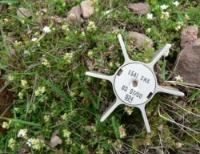Militarized Landscapes in Twentieth-Century Britain, France and the United States

Latest news:
The black smoke billowing from burning oil wells during the Gulf War of 1990-91 directed media and public attention towards war's environmental impact. Yet even before the first bomb is dropped, preparation for warfare materially and imaginatively reshapes landscapes and environments. However, this form of military mobilization remains under-researched. This project, funded by the Arts and Humanities Research Council (AHRC), seeks to rectify this neglect through a comparative analysis of the emergence, management and meaning of militarized landscapes. In particular, it will explore the role of military lands as reservoirs of biodiversity often superior in `green' value to surrounding non-militarized landscapes subject to intensive agricultural practices and other customary forms of human encroachment. How and why have military authorities embraced nature conservation policies? The status of defence estates as landscapes emptied of human residents and civilian activities is another central ingredient of our study. We will also consider the challenges to militarized landscapes from those seeking access and a share of decision making and control. Of special interest here is the interplay between the imperatives of defending the nation and defending nature. The focus on British, French and American histories will bring out the common ground and divergences between national military cultures and the local, national and continental specificity of their expression and impact on the landscape, providing a vital historical perspective on highly topical questions of military power and environmental responsibility.
Past news:


